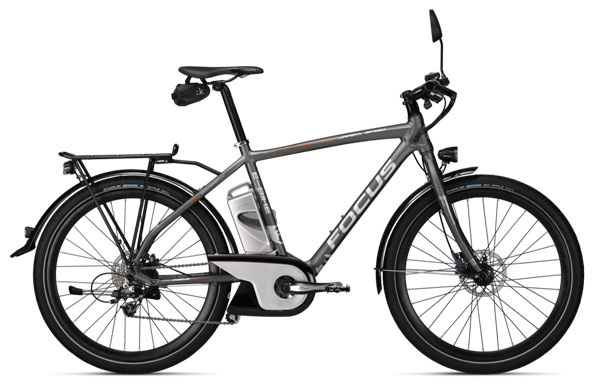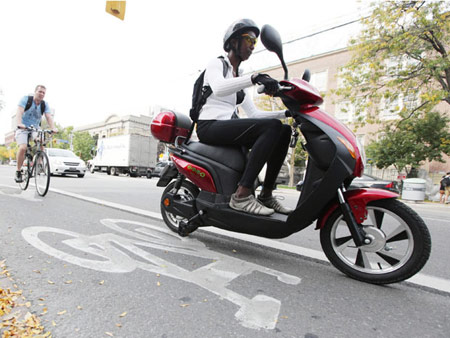There is a lot of confusion over e-bike and electric scooter. Many people mistakenly equate the two and think that electric scooters should be allowed in bike lanes and on bike baths. That is not only erroneous it is a terrible idea. It might have something to do with the whole “bi-cycle” meaning two wheels. But by that logic, glue a couple of pedals onto a crotch-rocket and bam you get another lane!
First the difference. An e-bike is a pedal assisted bike and they have been around for ages. They are generally used as an electric scooter for adults by people who have difficulty with hills or have weak staminas and use batteries to help propel the bike. They’re bikes because they are primarily powered by someone’s feet on pedals. They have limited speed and are essentially motors attached to bicycle frames.

Electric scooters on the other-hand are motorized vehicles that have pedals on them to meet some government requirement. They look like scooters, are on scooter frames, they just have electric engines instead of gas ones. Look at this picture of an electric scooter. Notice how this woman’s feet are on a platform, not on the pedals? That’s because the pedals are behind her centre of gravity and on the sides of a wide seat; in essence they’re useless.
Now I understand the desire to be in bike lanes. People don’t like to ride around cars I don’t like it either when I am cycling. But electric scooters should be treated like scooters. They should require a license and insurance. They should not be allowed in on bike paths, or bike lanes.
Here is my reasoning, even though e-Scooters have inhibitors which prevent them from travelling faster than 32km an hour and the average speed in a bike lane is around 25km/hr, (so not a huge difference) their momentum is a huge issue, and I will go in to detail in a bit. On bike paths like the Martin Goodman trail the speed is even slower (20km/hr) and a cyclist doing 25 is a lot closer to the speed limit than a scooter doing 32. You might say that police should just ticket speeders but the reality is they don’t and many of these people are not experienced riders. Martin Goodman trail is multi use, meaning there are people walking, roller-blading, skateboarding and cycling on it. It is not the place to have someone moving the same speed as cars in a school zone in close proximity to people.
Back to momentum. There is also the weight of the bike to consider. An e-scooter is 80kg and the average bike is around 9kg. As a result the amount of force behind each in the event of an accident is considerably different.
Momentum is calculated as mass times velocity (p=m*v). Assuming we have a rider of 80kg (I am being generous here since most e-scooter riders are larger than regular cyclists) we end up with 160kg for the scooter and 89 kg for the cyclist; I will even round up to 90 for easy math. As for the speed we will change it to meters per second:
32 km/hr = 8.89 m/s
25 km/hr = 6.99 m/s
When we run the math we can see that the scooter will carry over twice as much momentum as a cyclist. It is just a matter of time before someone is killed by an electric scooter.
Scooter
160 * 8.89 = 1422.4
Cyclist
90 * 6.99 = 629.1
If you are using an ebike or an e-scooter for environmental reasons I applaud your efforts; if you ride a pedal bike even more so, but you should be in the appropriate lane. The government should be clear about the rules, and remove any wishy-washy “should have pedals” loopholes. Everyone should know where they should be and stuff like this probably won’t happen as often.

